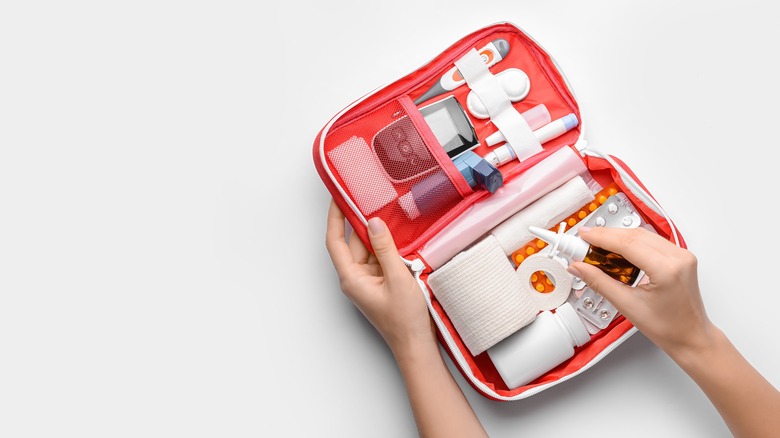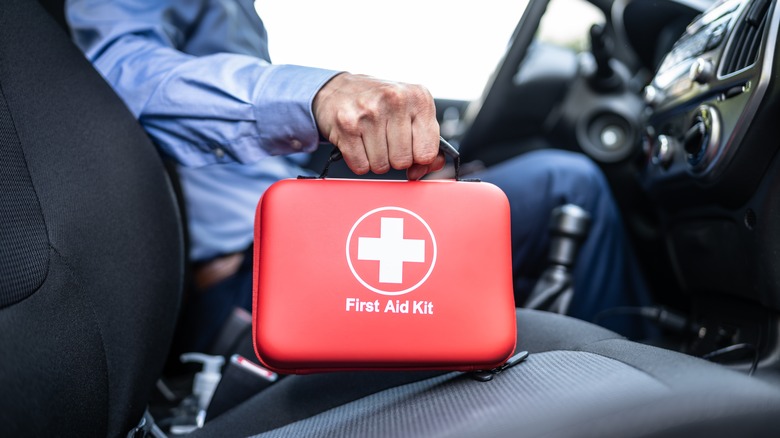Planning Planes, Trains And Automobiles
Kaitlyn Rosati
When embarking on a road trip, it’s always best to take the over-prepared route as opposed to the under-prepared one. You never know how close you’ll be to a nearby grocery store, gas station, or convenience store, so packing as many helpful additives in your vehicle prior to travel is a wise move. While this includes bringing things like filtered water, non-perishable food such as dried fruits and granola, instant coffee, blankets, towels, and more, something many road trippers forget to pack is a first aid kit. A first aid kit is one of the most essential items needed when hitting the road, and luckily, you don’t need to purchase one.
If you don’t feel like running out to your nearest Walgreens or Walmart to purchase a new first aid kit, you’d be surprised to know that you might have most things already in your possession in order to make one yourself.
Everyday household items to include

Pixel-Shot/Shutterstock
To make your own first aid kit, let’s start with the essentials. You’ll need a vessel to put your first aid kit tools in, so find a medium-sized tupperware or plastic container. Once you have that, it’s time to start packing. A typical first aid kit includes things like bandages, antiseptic sprays, pain relievers, medical tools, creams and ointments, adhesive cloth tape, and more. If you have Advil, Tylenol, Excedrin, or any equivalent, that should go in your DIY first aid kit. The amount you need will depend on how long you’re traveling, but it’s always better to pack more than you think you need when it comes to medicine. A good way to store these is to use smaller plastic containers to put inside your vessel and use a Sharpie to label them.
Next, you’ll want to pack bandages. It’s likely that you have Band-Aids in your household already. The American Red Cross advises packing 25 Band-Aids of varied sizes. You’ll also want to include a few pairs of latex gloves, a topical antibiotic like Neosporin, surgical dressing, some type of cold press or ice pack, and hydrogen peroxide, as well as some hand towels or similar types of cloth. Always remember other personal essentials: tampons, pads, and/or other menstrual products, contact solution, prescription medicines, and more. Will you be traveling with a cat or a dog? Consider adding in tick prevention medicine and dog/cat “booties.”
Medical tools you’ll want to include

Andrey_Popov/Shutterstock
Even if you’re not a doctor or don’t work in the medical field, you’d be surprised to know that you might have some medical tools and safety items on hand to pack in your first aid kit. You’ll want to include a pair of tweezers in case you get stung by a bee or get any type of debris stuck in your skin. You’ll also want to bring a thermometer, should you start to feel sick on the road and want to ensure you’re not getting a fever.
It’s not a bad idea to pack an emergency blanket, either, which is designed to fold into the size of a wallet. You can also bring a fleece blanket, and if you’re worried about this taking up too much size, use a compression bag to pack it in tightly. Packing a flashlight can also help, in case you are to get injured in the dark. Another valuable tool to consider bringing is a set of first aid kit instructions, so, should you be in a state of panic, you’ll have clear instructions for how to use each tool you packed.

